Although a ruin, the remains are a beautiful reminder of the great abbey that once was, an institution that nurtured the likes of Gioacchino da Fiore, the famous Italian theologian. The Abbazia di Santa Maria di Corazzo or the Corazzo Abbey lies in Calabria’s Sila Piccola, an atmospheric mountainous plateau in the Province of Catanzaro. My visit was greatly enhanced by local volunteers, who revealed the abbey’s rich medieval past as they worked to secure its present and protect it for the future.
HISTORY OF CORAZZO ABBEY
The Abbazia di Santa Maria di Corazzo was founded in the 11th century in a valley near the Corace River, today, within the town of Carlopoli. Originally a Benedictine monastery, the Corazzo Abbey was reconstructed by the Cistercians in the 12th century, and shortly thereafter would be where Gioacchino da Fiore became a monk and then, an abbot. There, he began writing La Genealogia (The Genealogy), his first of many works.
As a Cistercian Order, the Corazzo Abbey would have been self sufficient. From agricultural endeavors to the construction of mills, the monks worked tirelessly. To aid the fertility of their fields, they diverted the course of the Corace River, built an aqueduct and studied the chestnut tree, an important food source for the local population.
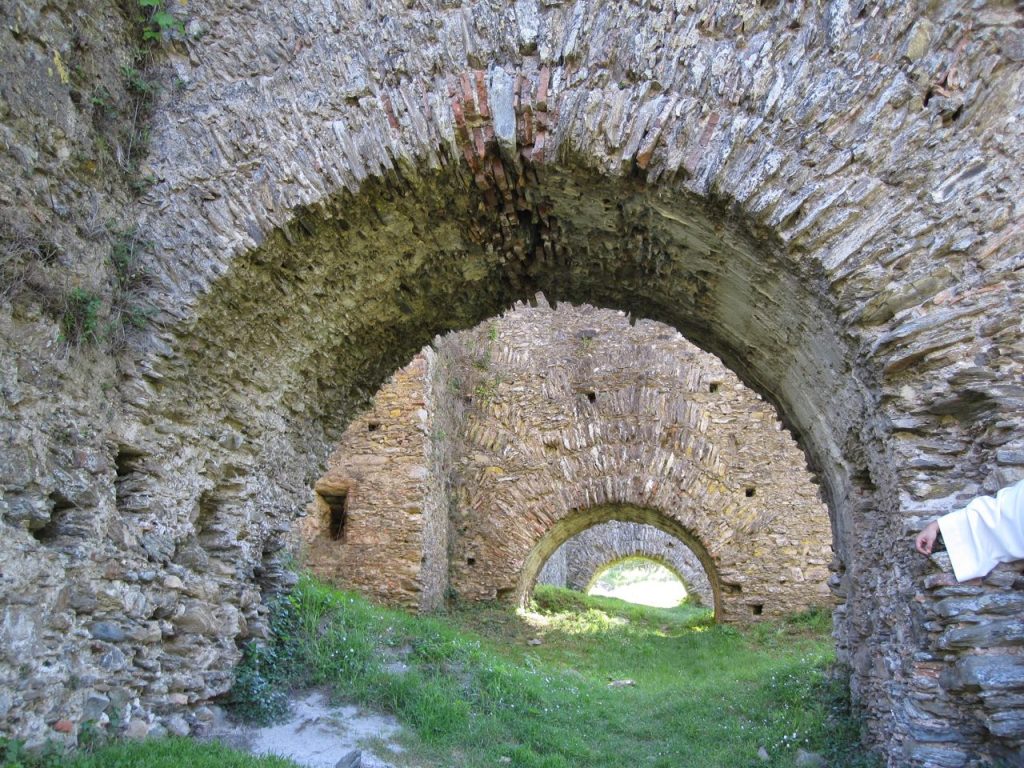
Corazzo Abbey
Through contact with the Knights Templar, the Corazzo Abbey is said to have housed precious church relics, such as a piece of Christ’s cross and a lock of Mary Magdalen’s hair. Another legend tells of the abbey serving as a hiding place for the Templar’s last Grand Master. In the Renaissance, Bernardino Telesio, the 16th-century philosopher and naturalist from Cosenza, found inspiration inside the abbey’s books and walls.
Plague, earthquakes, wars and schisms all contributed to the monastery’s decline over several centuries. The final blow was suffered during the French occupation when the Cistercian Order and the monastery were suppressed in 1807-1808. At that point, the abbey was stripped of its riches, a number of which can be found in area churches, such as the marble altar, holy water font and wooden candelabras in the Parrocchiale San Giovanni Battista (Parish Church of St. John the Baptist) in nearby Soveria Mannelli.
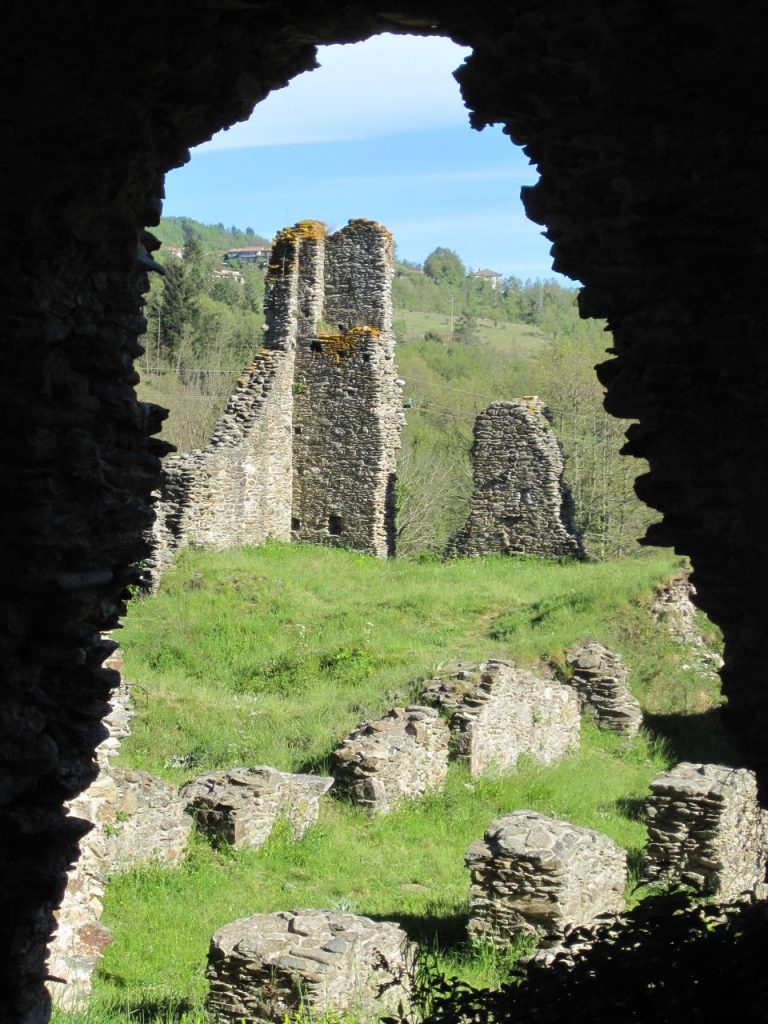
Amongst the ruins of the Corazzo Abbey in Carlopoli, Calabria
CAMMINO DI GIOACCHINO DA FIORE
To put the Corazzo Abbey back on the map, so to speak, a pilgrimage route that follows in Gioacchino da Fiore’s footsteps has been inaugurated. The Cammino di Gioacchino da Fiore recalls the well-known Camino de Santiago in Galicia, Spain. The first stage starts at the Chiesa (church) Veterana in Lamezia Terme and ends 19.5 km later at the Abbazia di Santa Maria di Corazzo. The second leg continues 26.65 km to Tirivolo and the third ends after 28.7 km at the Abbazia di San Giovanni in Fiore, founded by Gioacchino himself.
To give a sense of the theologian’s importance in his day, Dante Alighieri considered him blessed with a prophetic spirit and placed him in Paradise in his Divine Comedy. Gioacchino advised popes and purportedly even Richard the Lionhearted before he embarked on the Third Crusade. His interpretation of the Book of Revelation explored the Holy Trinity in relation to the apocalypse, separating the three entities into time periods: the Father or the Old Testament, the Son or the New Testament, and the Holy Spirit or a New Age in a future where all peoples would unite under an eternal gospel. Many in the church viewed his writings as heresy; others have attempted to make him a saint.
VISIT CORAZZO ABBEY IN CALABRIA
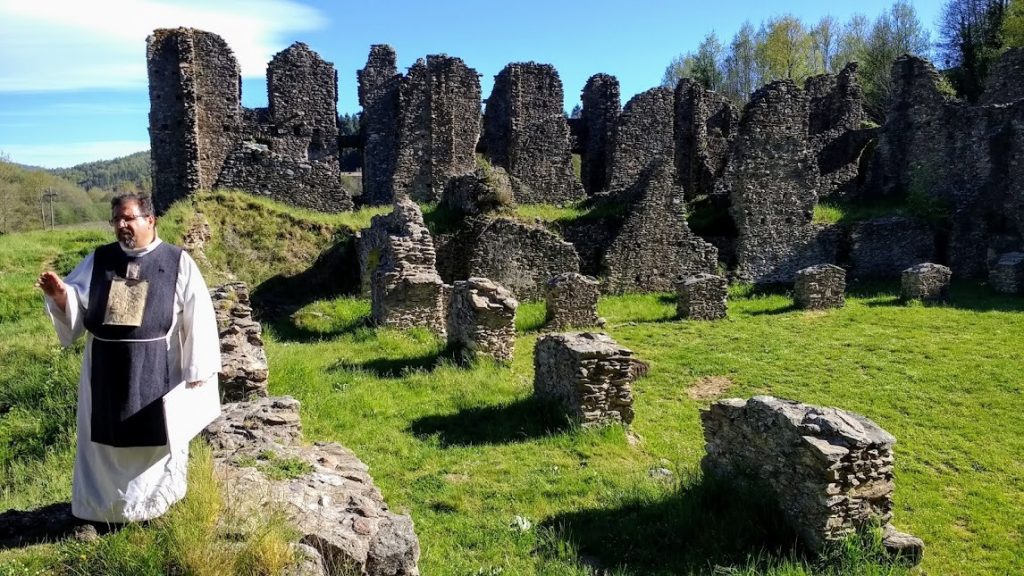
Guide at Corazzo Abbey
I had the opportunity of touring the Corazzo Abbey with a guide and volunteer of the Progetto Gedeone, an organization that has combined the safeguarding and promotion of the abbey with helping those in need. The project offers work opportunities to those in difficult economic, social or psychological situations while developing tourism and advocating the cultural and environmental resources of the area. The grounds are taken care of by the young men going through hard times, and they sell their oregano, saffron and garlic to tourists for a small offering.
The guide was a volunteer with a great enthusiasm for his subject. Dressed in a monk’s tunic, he threw himself into the role, imparting a wealth of information as he evoked the former life of the abbey. The church, the cloister, the refectory – I felt a tranquillity between the old stone walls.
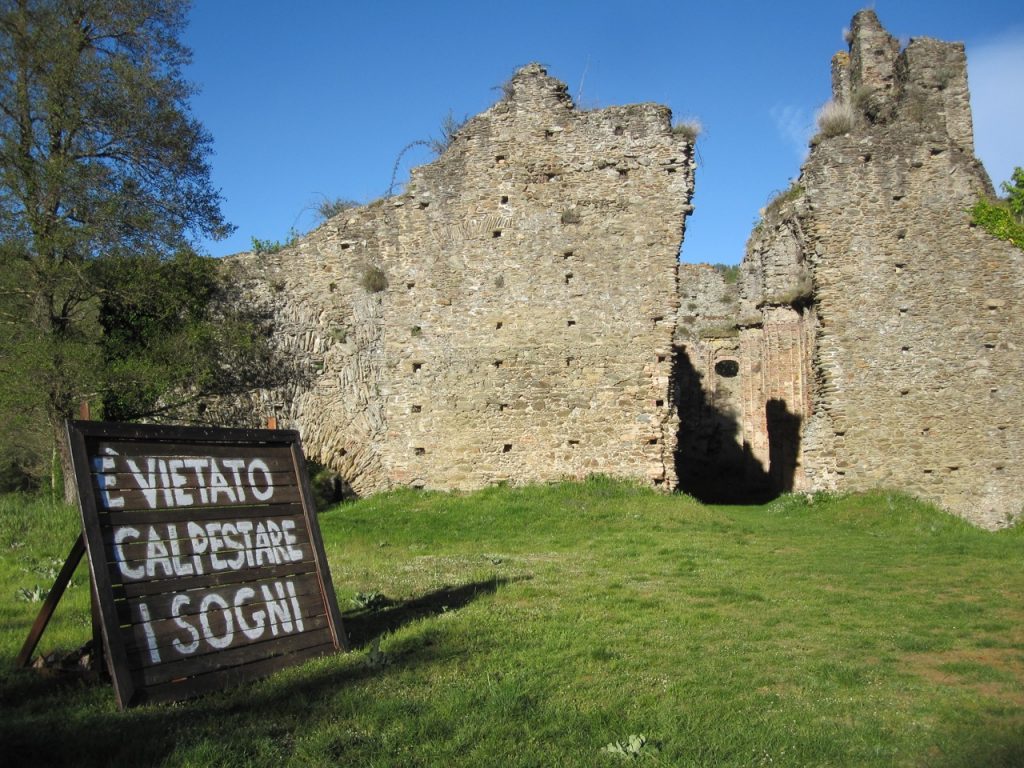
It’s prohibited to crush dreams at Corazzo Abbey
Upon first seeing the large sign out in front of the abbey, I scratched my head. È vietato calpestare i sogni – Crushing dreams is prohibited. But after the tour, I understood its relevance. These people were doing good works. In Italy, so many tourist sites are neglected, ostensibly for lack of funds, and in this relatively isolated area, a group got together and did something about it. In their words: “There are places in Calabria that have silently waited for years, there are stories hidden in the woods, ready to be told. There are enchanted valleys that don’t have the need for big changes, of massive financing, of technologically advanced museums. Just a little attention.” The Progetto Gedeone is giving more than that to the Corazzo Abbey.
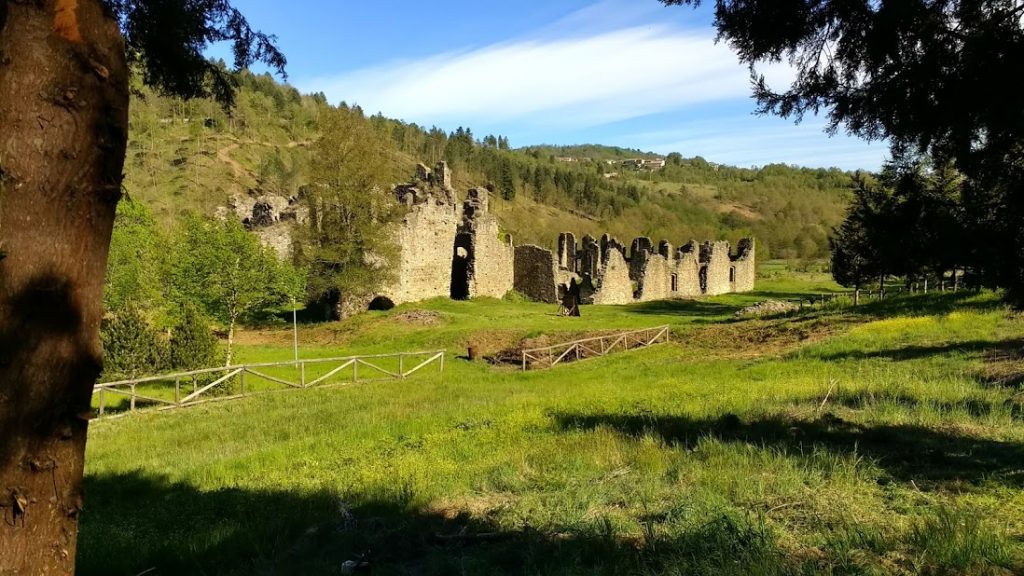
Abbazia di Santa Maria di Corazzo
The Abbazia di Santa Maria di Corazzo is accessible to the public daily in the Castagna section of the town of Carlopoli in the Province of Catanzaro. Volunteers from the Progetto Gedeone are on the premises and available for tours. Follow their activities on Facebook: Progetto Gedeone Abbazia di Corazzo Carlopoli.
 Read more about the beautiful land in the toe of the Italian boot in Calabria: The Other Italy, my non-fiction book about daily life, history, culture, art, food and society in this fascinating southern Italian region.
Read more about the beautiful land in the toe of the Italian boot in Calabria: The Other Italy, my non-fiction book about daily life, history, culture, art, food and society in this fascinating southern Italian region.
Interested in Italian religious festivals? Read about the Festival of the Madonna in Reggio Calabria and Easter in Calabria, The Processions of Badolato, as well as in my books Calabria: The Other Italy and Basilicata: Authentic Italy.
“Like” Calabria: The Other Italy’s Facebook page and follow me on Karen’s Instagram and Karen’s Twitter for more beautiful pictures and information.
Sign up below to receive the next blog post directly to your email.

Comments 8
Inspiring!
Author
Yes, indeed!
It looks to be a most peaceful place, and I think I’ve found a new motto for myself & family! Crushing dreams should be prohibited in all places at all times. 🙂
Author
Especially when the dreams are positive and charitable.
Ciao Karen,
I wonder if like many other monasteries the monks of Abbazia di Santa Maria di Corazzo grew wine grapes to make wine for Mass. Part of their self-sufficiency perhaps!
Author
Ha, ha. Good question. I don’t remember that specifically being addressed on the tour, but my mind may have wandered. However, I’m sure they crushed and distilled all sorts of things!
Beautiful ruins! It’s a shame the original no longer remains in its totality, but then, we ARE free to imagine all sorts of lovely structures AND dream the dreams of the imagination!
Many thanks, Karen!
Author
I agree – a beautiful place in which and about which to meditate. Glad you enjoyed the post!